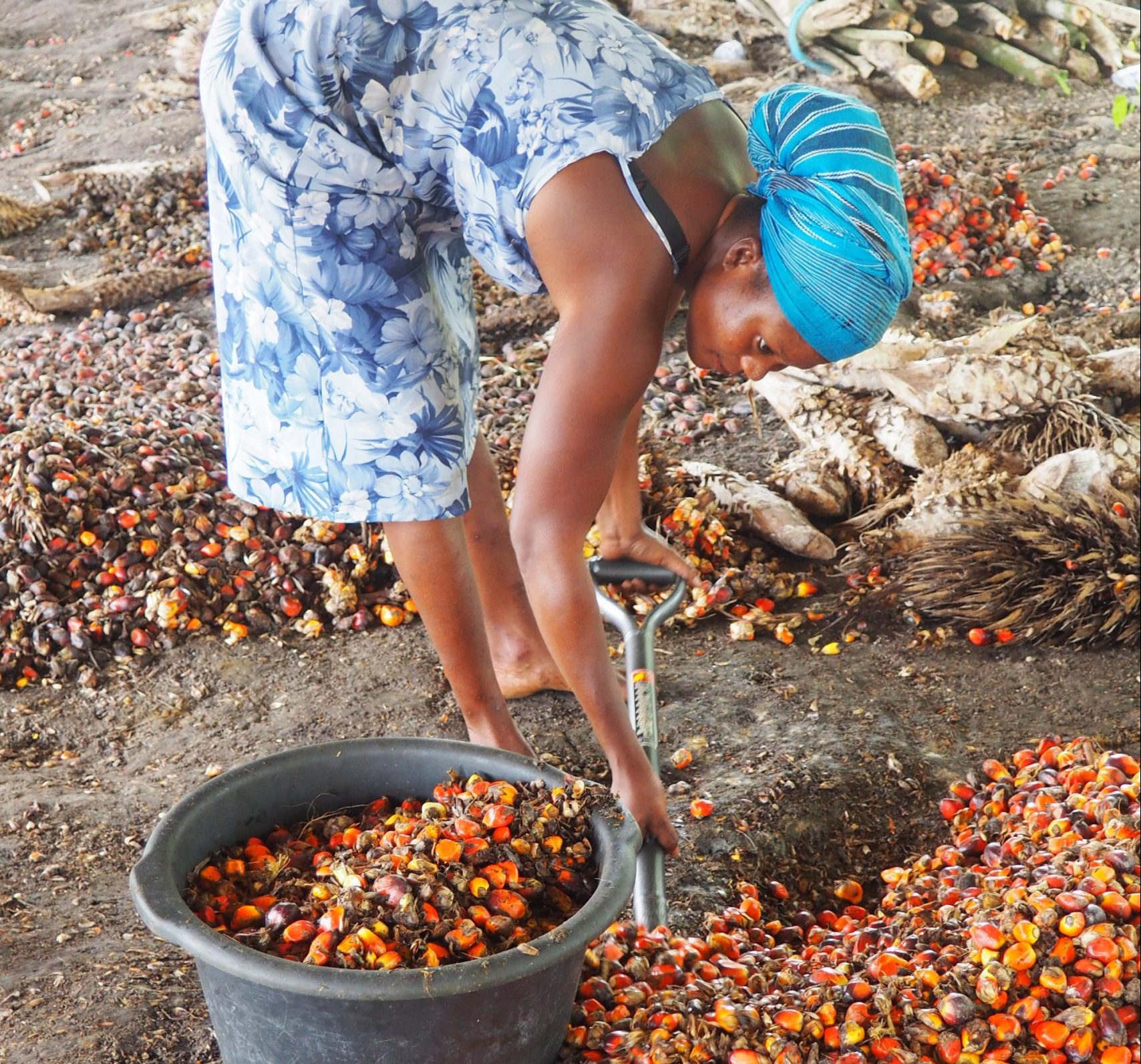Agricultural technology, food security and nutrition in Ghana

Written by: Lisa Capretti, Amrita Saha, Farai Jena and Fred Dzanku
Agricultural technologies play an important role in helping smallholders to increase their yields and incomes, and therefore tackle poverty and food insecurity in Sub-Saharan Africa. Using new panel data for oil palm producers in Ghana from the Agricultural Policy Research in Africa (APRA) consortium, a new paper sheds light on the relationship between the use of agricultural practices, food security and nutrition, and what impact women’s empowerment has on these gains.
Agricultural practices supported by technological advances have played an important role in agricultural commercialisation, with critical links to poverty and food security in Sub-Saharan Africa. The use of agricultural technology in oil palm production is widely acknowledged to improve yields. However, there remains limited evidence on women’s access and use of agricultural technology at the local level, and how this translates to improvements in nutrition and household food security.
Our study specifically considered the role of two agricultural practices used in oil palm production in south-western Ghana, namely, irrigation and use of agrochemicals. We explored how these agricultural practices are associated with household food security and women’s nutritional outcomes. We also examined how women’s empowerment (defined as high levels of women’s participation in household decisions and/or a greater control of household resources by female household members) and its interaction with the use of at least one agricultural practice, enhance their nutrition and household food security.
What did we find?
Our findings suggest that irrigation and use of agrochemicals in oil palm production translate into enhanced nutrition for women. In particular, women who employ these practices are more likely to have a more diverse dietary intake.
Empowerment is also shown to be a significant transmission channel through which the use of agricultural practices translates into improved food security and nutrition outcomes. For example, women who participate more in household decisions are more likely to consume 0.4 more food groups compared to those with lower empowerment levels. Women empowerment also appears to have a positive influence on household food security, independent of whether households use either of the agricultural practices. Households where women are more empowered are also less likely to have suffered from multiple and severe forms of food insecurity in the past 12 months.
We also find that women empowerment remains a significant mechanism that links fertiliser use and food insecurity, after accounting for heterogeneity in technology use. This suggests that the use of fertiliser provides significant gains to those households where women already have a strong level of empowerment.
Lastly, households where women have lower empowerment scores appear to have a reduction in household food insecurity after using at least one of the two practices considered, but there were no effects on women’ nutrition. This could mean that when faced with trade-offs between their own nutrition and household food security, and having less control over their household’s resources, less empowered women prioritise their household’s well-being rather than the quality of their own nutrition.
Conclusions and policy implications
Overall, our results imply that while access to technology is relevant to household food security and dietary intake, it is not enough on its own. Women empowerment appears a significant channel through which technology uptake translates into improved food security outcomes. Policy interventions that enhance women’s empowerment would play an essential role in ensuring food security and nutrition outcomes. Such policy interventions can include involving women in agricultural training programmes on oil palm production and helping them access agricultural inputs that they can manage independently. Policy interventions that translate to women becoming more empowered are also likely to facilitate the positive role of agricultural technology in improving household food security and women’s nutritional outcomes.
Photo credit: © Ahtziri Gonzalez/CIFOR
